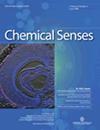Astringency and its sub-qualities: A review of astringency mechanisms and methods for measuring saliva lubrication
IF 1.9
4区 心理学
Q1 BEHAVIORAL SCIENCES
引用次数: 0
Abstract
Astringency is an important mouthfeel attribute that influences the sensory experiences of many food and beverage products. While salivary lubricity loss and increased oral friction were previously believed to be the only astringency mechanisms, recent research has demonstrated that non-tactile oral receptors can trigger astringency by responding to astringents without mechanical stimulation. Various human factors have also been identified that affect individual responses to astringents. This article presents a critical review of the key research milestones contributing to the current understanding of astringency mechanisms and the instrumental approaches used to quantify perceived astringency intensity. Although various chemical assays or physical measures mimic in-mouth processes involved in astringent mouthfeel, this review highlights how one chemical or physical approach can only provide a single measure of astringency determined by a specific mechanism. Subsequently, using a single measurement to predict astringency perception is overly idealistic. Astringency has not been quantified beyond the loss of saliva lubrication; therefore, non-tactile receptor-based responses must also be explored. An important question remains about whether astringency is a single perception or involves distinct sub-qualities such as pucker, drying, and roughness. Although these sub-quality lexicons have been frequently cited, most studies currently view astringency as a single perception rather than dividing it into sub-qualities and investigating the potentially independent mechanisms of each. Addressing these knowledge gaps should be an important priority for future research.涩味及其子质量:涩味机理和唾液润滑度测量方法综述
涩味是一种重要的口感属性,影响着许多食品和饮料产品的感官体验。以前人们认为唾液润滑性丧失和口腔摩擦力增加是唯一的收敛机制,但最近的研究表明,非触觉口腔感受器可以在没有机械刺激的情况下对收敛剂做出反应,从而引发收敛。此外,还发现了影响个人对收敛剂反应的各种人为因素。本文对目前有助于了解涩味机制的重要研究里程碑以及用于量化感知涩味强度的仪器方法进行了深入评述。虽然各种化学分析或物理测量方法都能模拟涩味口感所涉及的口腔过程,但本综述强调了一种化学或物理方法如何只能提供由特定机制决定的单一涩味测量方法。因此,使用单一测量方法来预测涩味感知过于理想化。除了唾液润滑的损失之外,涩味还没有被量化;因此,还必须探索基于非触觉受体的反应。一个重要的问题是,涩味是一种单一的感知,还是涉及不同的子品质,如起皱、干燥和粗糙。虽然这些子品质词典经常被引用,但目前大多数研究都将涩感视为一种单一的感知,而不是将其分为多个子品质并研究每个子品质的潜在独立机制。解决这些知识空白应该是未来研究的一个重要优先事项。
本文章由计算机程序翻译,如有差异,请以英文原文为准。
求助全文
约1分钟内获得全文
求助全文
来源期刊

Chemical Senses
医学-行为科学
CiteScore
8.60
自引率
2.90%
发文量
25
审稿时长
1 months
期刊介绍:
Chemical Senses publishes original research and review papers on all aspects of chemoreception in both humans and animals. An important part of the journal''s coverage is devoted to techniques and the development and application of new methods for investigating chemoreception and chemosensory structures.
 求助内容:
求助内容: 应助结果提醒方式:
应助结果提醒方式:


